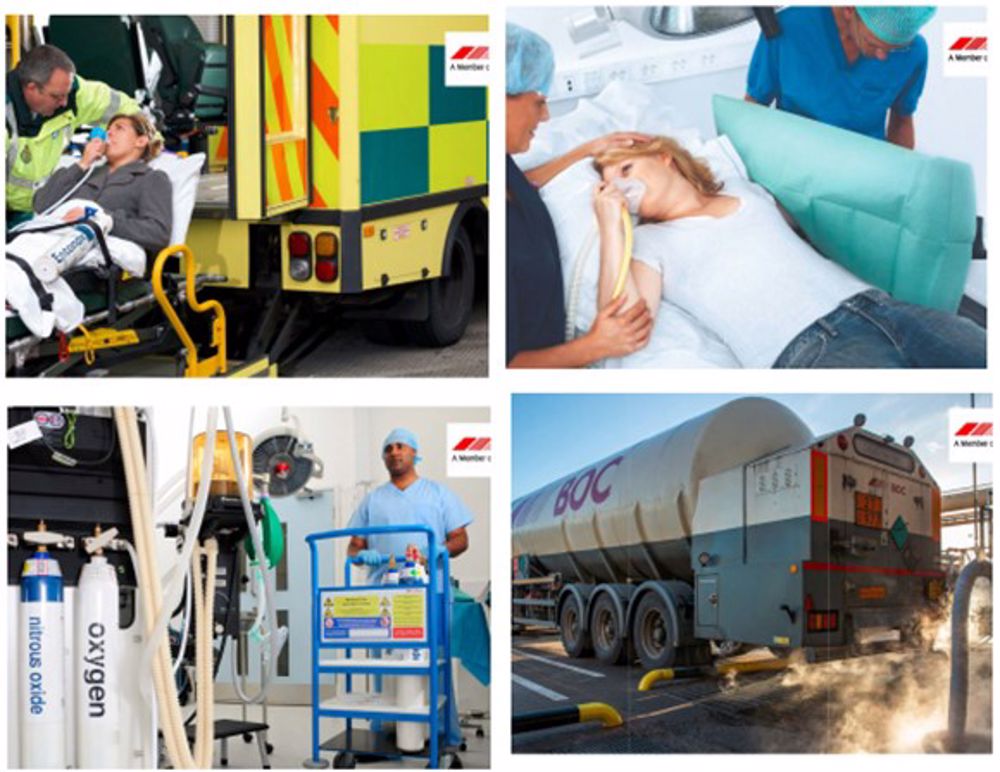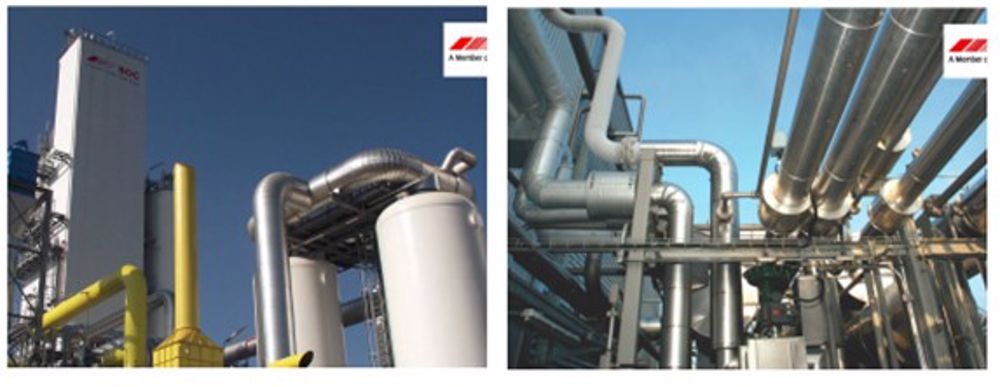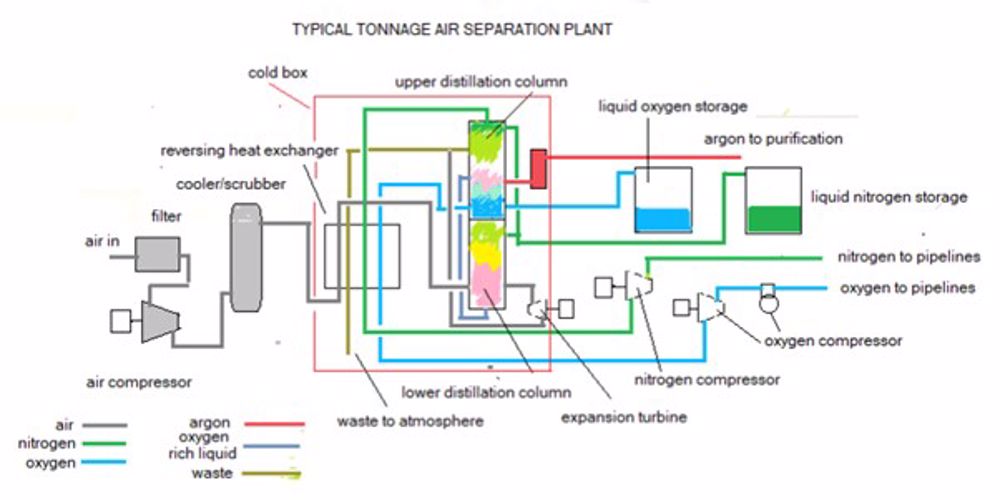Medical Oxygen
A patient lies critically ill while a dedicated team of doctors and nurses are struggling to save him. An oxygen mask fed from a wall point supports his breathing. Then he starts to recover, the room and the figures round him come slowly into focus. The oxygen has saved him. He does not know where this oxygen has come from nor does he care -he is alive.
Had this occurred in the first part of the 19th century he would have died. By the 1900s that had changed. Medical oxygen had arrived. As the 20th century progressed oxygen was available for everyone from those undergoing serious operations, at the scene of accidents and even to use in the home.

This had been made possible by sound chemical engineering to provide a cryogenic process which could be made on any scale to meet demand. The distribution of this medical oxygen ranges from small cylinders of compressed gas to purpose designed vacuum insulated road tankers delivering to bulk storage at major hospitals. The importance of this product has been even greater during the current devastating world wide COVID pandemic. In those countries where supply and distribution were less robust, mounting shortage of oxygen has caused catastrophic loss of life.
The process of separating oxygen from air by distillation has the potential to be carbon neutral as the input is power which can be 100% renewable. Some loss of cooling water by vaporisation takes place but the process for cylinder filling and for bulk product require only power.

The chemical composition of oxygen product is determined mainly by industrial requirements which can be very particular. However in the case of medical gases any error in providing wrong or inadequate product could be fatal so the management of production and distribution is stringently controlled by safeguarding procedures.
In the UK, the Medicines Act applies and regular visits of their inspectors are made to the works of the oxygen producer.
As I constantly reminded the people who were involved in this work - not only could the consequences of a mistake be serious for the patient but the company would rightly receive disastrous publicity in the media.
As a brief description of the process, feed air is drawn through filters, cooled/washed, cooled to cryogenic temperatures thereby removing moisture and carbon dioxide and then as the air becomes liquefied separating it into oxygen, nitrogen and argon by distillation. The separated products are then drawn off either directly as liquid or as gas, heated to atmospheric temperature by the ingoing air. Cryogenics is a whole technology in itself.

Where bulk liquid is required in addition to the above, the product is cooled to liquid temperature in a liquefier before going to cryogenic storage and distribution. Cylinders are filled by compressor if from a gaseous source or by pump from a liquid source. Any product for medicinal use is clearly identified on the road tanker and in the case of cylinders each is colour coded and labelled for medicinal use. Throughout for medical use there is stringent quality contol, analysis and certificates issued.
By sound engineering, meticulous quality assurance and faultless distribution, the safety and welfare of the myriad of patients is assured.
Reference:
Some of the technical aspects of producing and distributing oxygen are given in the contribution 'OXYGEN AND OTHER INDUSTRIAL GASES together with the use of other gases critical to modern medicine (excluding nitrous oxide)